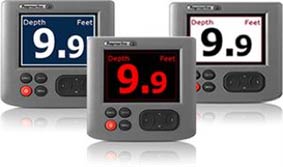Instrument systems
Instrumentation falls into two main types: the stand-alone instruments that have one sensor that sends signals to a dedicated display, and the integrated system that has several sensors displaying their information on any screen that is compatible.
The stand-alone instruments are independent, so if one goes down you haven’t lost the lot, but the integrated systems are more flexible and can be made to work together to give extra information. For instance if the log and wind instruments talk to each other they could give velocity made good (VMG). This is used when tacking to windward and will show the best angle to be at to make the best progress (VMG) towards the direction of the true wind. Racing skippers use it all the time but it is also handy for cruisers to see if they are pinching and to see what would happen if they bore away a bit.

Integrated systems also save space, as you can call up all the data you need on one or two displays rather than having a whole dashboard full of dials. Some speed sensors need to talk to a speed display first, but that information can then be viewed on any number of repeater displays.
Sensors such as an NMEA GPS antenna are self contained and only need a display to show the data – this can be shown alongside other data on a large screen, just like in an aircraft’s cockpit.
Wireless technology is also appearing in boats, which saves wiring problems and lets you view data wherever you like. This all may sound complicated, but if properly designed then both integrated and wireless instrument systems are generally easy to use.
Click here for the full range of Raymarine instrument systems.









